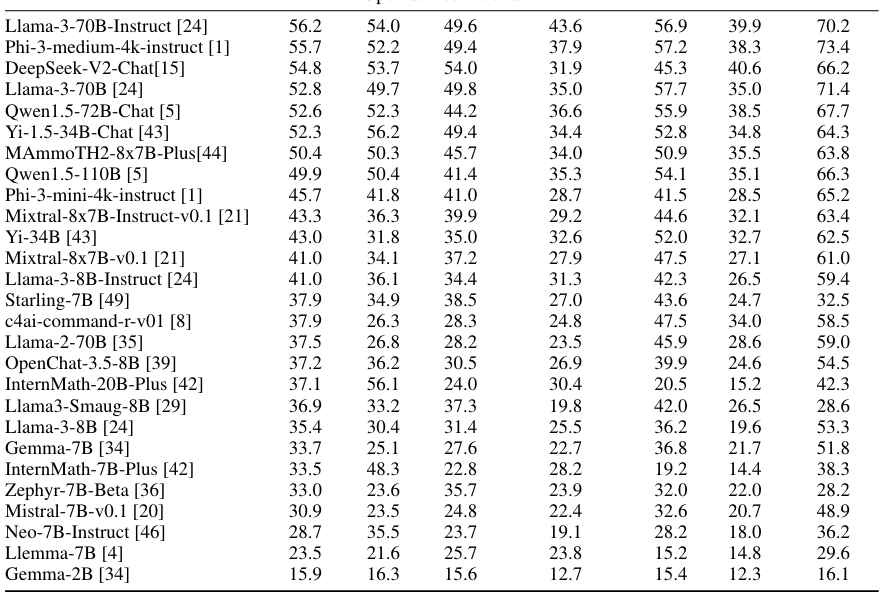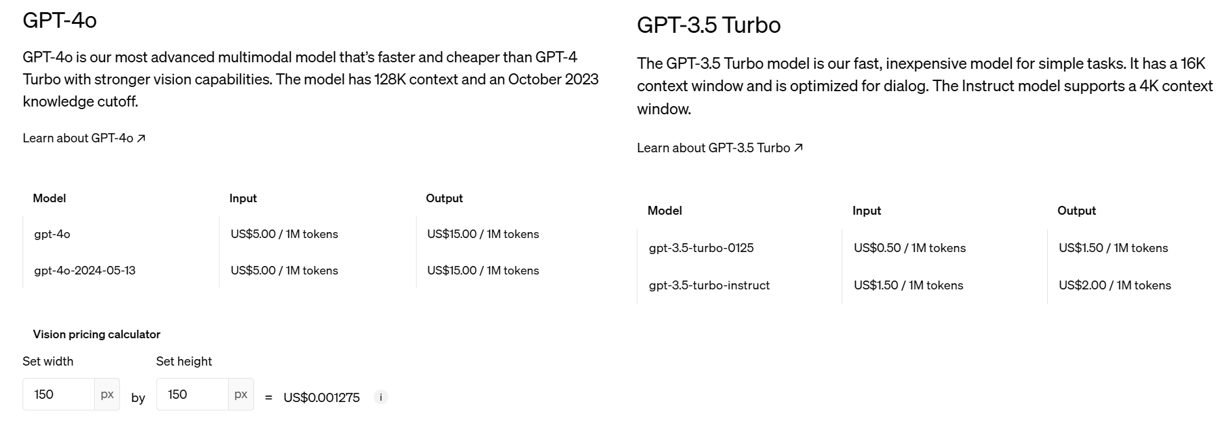Source
-
MMLU
- 測試集 dataset: hendrycks
MMLU数据集:https://github.com/hendrycks/test -
測試 code: ollmer: [GitHub - ollmer/mmlu: Measuring Massive Multitask Language Understanding ICLR 2021](https://github.com/ollmer/mmlu) - 測試 code: deepeval (JUNK!): GitHub - confident-ai/deepeval: The LLM Evaluation Framework
- Code: in ml_code/llm_evaluation_4_mmlu/evaluate_hf.ipynb and evaluate_llama.ipynb
- 測試集 dataset: hendrycks
-
MMLU Pro
- 測試集:Tiger-Lab: TIGER-Lab/MMLU-Pro · Datasets at Hugging Face
- [2406.01574] MMLU-Pro: A More Robust and Challenging Multi-Task Language Understanding Benchmark (arxiv.org)
-
測試 code: ollama + …: Colab/mmlu_pro_gpt.ipynb and Colab/mmlu_pro_ollama_llama3.ipynb
-
測試 code: https://github.com/TIGER-AI-Lab/MMLU-Pro/tree/main
- Sebastian 好像也有 code to evaluate MMLU performance? NO, 不是 MMLU!! Some simple examples
- LLM-from-scratch/ch07/03_model-evaluation/llm-instruction-eval-openi/ollama.ipynb
MMLU和MMLU-Pro的比較
| 特徵 | MMLU | MMLU-Pro |
|---|---|---|
| 範圍和內容 | 包含各種領域的廣泛問題集,主要以知識為主。評估模型的記憶和理解能力。 | 在MMLU的基礎上添加了更複雜的推理問題。重點在於評估高階認知技能,如問題解決和批判性思維。 |
| 難度等級 | 包含混合難度的問題,其中一些相對簡單或瑣碎。 | 通過去除簡單和噪聲問題並整合需要更深層推理的問題,顯著提高了挑戰性。 |
| 選項數量 | 每個問題提供四個選項。 | 選項擴展到十個,增加了難度,減少了隨機猜對的可能性。 |
| 準確性和敏感性 | 當前模型已達到高準確度,導致性能趨於平緩,對提示變化敏感(4-5%敏感性)。 | 由於難度增加,準確率顯著下降(比MMLU低16%到33%)。對提示變化的敏感性減少到僅2%,顯示出更大的穩定性和穩健性。 |
| 推理與直接回答 | 模型通常在直接回答技術上表現良好。 | 使用鏈式思考(CoT)推理的模型表現優於直接回答的模型,強調數據集對複雜推理任務的關注。 |
Introduction
大模型(LLM)的评测是衡量大模型效果的关键步骤,也是模型流水线中必不可少的过程。常见的大模型排行榜或平台有🤗 Open LLM Leaderboard、OpenCompass、Chatbot Arena Leaderboard.
那么,大模型的评测是如何实现的呢?
本文将会以MMLU数据集为例,考察主流开源大模型,如LLAMA-2, BaiChuan-2等模型的评估实现及结果,希望能管中规豹,一探究竟。
NLP(七十八)大模型探索:MMLU数据集评测 - My Github Blog (percent4.github.io)
MMLU Pro 数据集
隨著模型的持續改進,它們在 MMLU 測試上的表現開始趨於平緩,使得分辨模型能力的差異變得越來越困難。本文介紹了MMLU-Pro,一個增強的數據集,旨在通過引入更具挑戰性的推理問題和將選項從四個擴展到十個,來擴展以知識為主的MMLU基準。此外,MMLU-Pro消除了MMLU中瑣碎和噪聲問題。我們的實驗結果表明,與MMLU相比,MMLU-Pro不僅提高了挑戰性,導致準確率顯著下降16%到33%,而且在不同提示下顯示出更大的穩定性。測試了24種不同的提示樣式後,模型分數對提示變化的敏感性從MMLU中的4-5%降低到MMLU-Pro中的僅2%。此外,我們發現使用鏈式思考(CoT)推理的模型在MMLU-Pro上比直接回答的表現更好,這與在原始MMLU上的發現形成鮮明對比,表明MMLU-Pro包含了更多複雜的推理問題。我們的評估確認,MMLU-Pro是一個更具區分性的基準測試,可以更好地追踪該領域的進展。
MMLU Pro 從 17 子分類簡化成 14 個子分類。一共有12032 個問題。比例如下圖。
其中 MMLU 原來的問題占了 56.6%。另外的部分是新加的問題。

MMLU Pro 數據集的類別和子類別結構:
- STEM (6 sub-categories, 和 MMLU 相同)
- Mathematics
- Physics
- Chemistry
- Biology
- Computer Science
- Engineering
- Humanities (3 sub-categories, 和 MMLU 相同)
- History
- Philosophy
- Law
- Social Sciences (2 sub-categories,移除 Geography, Politics)
- Economics
- Psychology
- **Other **(3 sub-categories,移除 Culture)
- Health
- Business
- Other
MMLU Pro Dataset
第一步是 load dataset. 這裏使用 TIGER-Lab/MMLU-Pro, 基本是一個 MMLU 的 subset.
1 | |
dataset 的結構如下:
1 | |
Llama3-8B INT4
1 | |
To compare with paper:
| Overall | Math | Physics | Engineering | History | Law | Psychology | |
|---|---|---|---|---|---|---|---|
| 30.8 | 18.1 | 23.1 | 29.2 | 31.2 | 25.6 | 52.8 | |

使用 dataviewer

一個記錄如下
1 | |
Open AI API
2024/6/19 GPT-4o 和 GPT-3.5 Turbo 的價格差。
GPT-3.5 Turbo 便宜 10 倍,但是準確率也比較差。

GPT 設定
第二步是調用 gpt API,幾個重點:
- 設定模型本身:
- model = “gpt-4o” or “gpt-3.5-turbo-0125”
- 溫度: T = 0 是 greedy decode. T = 0.1 還是以穩定爲主。如果 T = 1 則是創意爲主。
- max_tokens: 最大的 context length, 也就是 KV cache size
- top_p, frequency_penalty, presence_penalty: ?
- 使用結構化 message 的 input prompt:
- role: 訂人設
- content: text 的 question (實際的 input)。應該可以加上 image 的content.
-
回傳 reponse, 其結構應該和 input prompt 一樣
-
message.content: 這是 answer
-
choices? 是同時產生幾個不同的 choices?
-
1 | |
1 | |